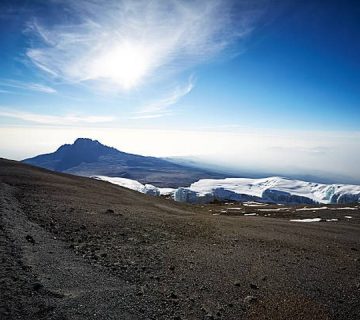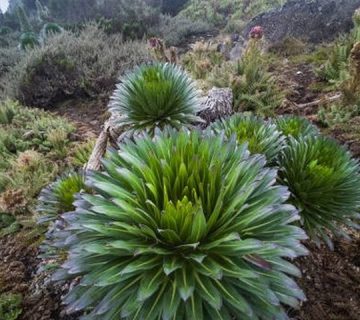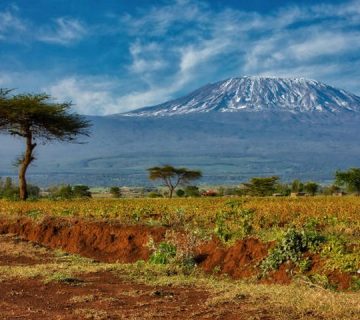How To Handle High-altitude Kilimanjaro Weather
Climbing Mount Kilimanjaro is an adventure like no other, attracting thousands of adventurers from all corners of the globe. As the tallest peak in Africa, Kilimanjaro offers not only breathtaking views but also a unique challenge due to its high-altitude weather conditions. To conquer this majestic mountain, understanding and preparing for these weather conditions is crucial. Here at the Kilimanjaro Centre for Trekking and Ecotourism (KCTE), we are dedicated to providing you with the expert knowledge needed to make your climb successful and enjoyable.
Understanding Kilimanjaro's Unique Climate Zones
Mount Kilimanjaro is a giant stratovolcano with several distinct climate zones that change as you ascend. Starting from the lush rainforests at the base, moving through alpine meadows, and finally reaching the arctic zone at the summit, each zone presents its own challenges.
The Tropical Rainforest
The base of Kilimanjaro is warm and humid, with frequent rainfall. Proper rain gear is essential here to keep you dry and comfortable during the initial part of your trek.
The Heath and Moorland
As you climb higher, the landscape changes to heath and moorland with lower temperatures and less humidity. Layered clothing will help you adapt to the varying temperatures easily.
The Alpine Desert
The air gets drier and the weather more unpredictable in the alpine desert zone. Daytime temperatures can be hot under direct sunlight, while nights are considerably colder.
The Arctic Summit
The summit zone is the most challenging with below freezing temperatures. Winds can be fierce and the air is thin. High-quality insulated gear is crucial to keep you warm and safe.
Equip Yourself for Success
Clothing and Gear
- Layering is Key: Start with moisture-wicking base layers, add insulating layers, and finish with a waterproof and windproof outer layer.
- Protect Your Extremities: A good quality hat, gloves, and thermal socks are indispensable.
- Footwear: Waterproof, insulated, and comfortable boots are a must-have to handle the rocky and sometimes icy terrain.
Health Considerations
- Stay Hydrated: The dry air can dehydrate you quickly. Drink plenty of water and avoid alcohol and caffeine.
- Acclimatization is Crucial: Spend a few days at higher altitudes to get used to the decreased oxygen levels.
- Watch for Altitude Sickness: Be aware of its symptoms and communicate with your guide if you feel unwell.
Timing Your Trek for Optimal Weather
Best Months to Climb
The best times to climb Kilimanjaro are during the dry seasons: January to mid-March and June to October. These months offer the clearest skies and lowest precipitation, making your climb slightly more predictable weather-wise.
Understanding Seasonal Changes
Kilimanjaro's weather is notoriously unpredictable, but understanding the general patterns can help you prepare better. The long rains typically occur from March to May, and short rains from November to December – it's best to avoid climbing during these months.
Weather Challenges and How to Overcome Them
Sudden Weather Shifts
The weather on Kilimanjaro can change abruptly. A sunny, clear morning can quickly turn into a foggy, chilly afternoon. Always be prepared with your rain gear and warm layers readily accessible.
Dealing with Altitude
At higher altitudes, the air becomes thinner and colder. Prepare your body by maintaining a slower pace to conserve energy and decrease the risk of altitude sickness.
The Final Push: Summit Night
Summit night is the coldest, most challenging part of the climb. Dress in your warmest gear, keep your pace steady, and focus on your breathing. Remember, slow and steady wins the race!
Why Choose KCTE for Your Kilimanjaro Adventure?
When you book your Kilimanjaro climb with Kilimanjaro Centre for Trekking and Ecotourism (KCTE), you're not just choosing a tour operator; you're choosing a partner who will be with you every step of the way. We provide experienced guides who are knowledgeable about high-altitude trekking and are trained to handle any weather conditions Kilimanjaro throws at you. Our success rates are among the highest, and our client testimonials speak volumes about our commitment to making your Kilimanjaro journey unforgettable.
FAQ Section
What is the best gear for climbing Kilimanjaro?
Invest in quality, insulated, and layerable trekking clothes. A sturdy pair of boots, thermal layers, a waterproof jacket, and a good sleeping bag rated for low temperatures are essential.
How do you deal with altitude sickness?
Ascend slowly, drink plenty of water, eat regular meals, and talk to your guide immediately if you feel symptoms like headache, nausea, or dizziness.
Can I climb Kilimanjaro if I'm not very experienced in hiking?
Yes, Kilimanjaro is climbable by people with moderate fitness levels. We recommend some physical preparation and possibly some hiking experience to make your climb more enjoyable.
How long does it take to climb Kilimanjaro?
It typically takes about 5-9 days depending on the route you choose. We recommend routes that allow for better acclimatization, such as the 7-day Machame route.
Concluding Thoughts
Handling the high-altitude weather on Kilimanjaro is all about preparation, the right gear, and the right guidance. At KCTE, we are committed to providing you with all three, ensuring you have a thrilling yet safe adventure. Ready to take on the challenge of Kilimanjaro with us? Visit our website for more information and to book your climb. The roof of Africa awaits, and the journey of a lifetime is just a step away. Embrace the adventure, conquer your fears, and create memories that will last forever with KCTE.




